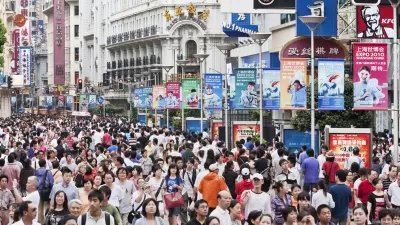An interactive visualization recently released by Unicef presents a startling picture of the world's urban population growth from 1950 to 2050. Mark Wilson deconstructs its implications.
Produced by Unicef, with the help of design studio Periscopic, "An Urban World" shows urban population growth in 10 year increments looking backwards and forwards.
Other than the astounding predicted growth that can seen in the urban populations of the developing world, another important statistic provided by the map is the percentage of each country's overall population that is urban. By 1990, 75% of the population of the United States, for instance, lived in cities. By comparison, Wilson notes that "China and India swell to astounding proportions without reaching our general city density. By 2050, somewhere between 50-75% of their population will live in cities. In other words, the India and China of tomorrow look a lot like the U.S. from the 1980s."
"Now, whether this ends up being a good or bad thing--whether we're talking about urban slums or smartly scaled communities, loosely populated expanses of efficient agriculture, or underdeveloped countrysides stricken by poverty--none of that is written on this map because none of that is written just yet. But it's hard to watch these bubbles grow, expanding into one another in a battle for your mere vision (let alone food, housing, and wages) and earnestly expect that everything is just going to be all right."
FULL STORY: By 2050, 70% Of The World’s Population Will Be Urban. Is That A Good Thing?

Maui's Vacation Rental Debate Turns Ugly
Verbal attacks, misinformation campaigns and fistfights plague a high-stakes debate to convert thousands of vacation rentals into long-term housing.

Planetizen Federal Action Tracker
A weekly monitor of how Trump’s orders and actions are impacting planners and planning in America.

In Urban Planning, AI Prompting Could be the New Design Thinking
Creativity has long been key to great urban design. What if we see AI as our new creative partner?

King County Supportive Housing Program Offers Hope for Unhoused Residents
The county is taking a ‘Housing First’ approach that prioritizes getting people into housing, then offering wraparound supportive services.

Researchers Use AI to Get Clearer Picture of US Housing
Analysts are using artificial intelligence to supercharge their research by allowing them to comb through data faster. Though these AI tools can be error prone, they save time and housing researchers are optimistic about the future.

Making Shared Micromobility More Inclusive
Cities and shared mobility system operators can do more to include people with disabilities in planning and operations, per a new report.
Urban Design for Planners 1: Software Tools
This six-course series explores essential urban design concepts using open source software and equips planners with the tools they need to participate fully in the urban design process.
Planning for Universal Design
Learn the tools for implementing Universal Design in planning regulations.
planning NEXT
Appalachian Highlands Housing Partners
Mpact (founded as Rail~Volution)
City of Camden Redevelopment Agency
City of Astoria
City of Portland
City of Laramie



























